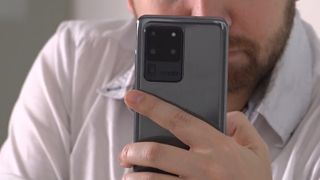
Whereas Huawei and Samsung have been dominating telephoto images in telephones with periscope lenses able to 3x and even 5x optical zoom, Apple may not be far behind: iPhones might get their very own periscope lenses… although not till 2022.
In different phrases, don’t anticipate the iPhone 12 to pack a periscope zoom – the telephoto system that stacks lenses alongside a phone’s size and makes use of a mirror to angle it out the again aspect. However the subsequent iPhone will get a images improve within the type of autofocus enhancements, in keeping with a Kuo report seen by 9to5Mac.
Apple is contracting with extra lens suppliers to diversify its provide chain, Kuo claims: the iPhone 12’s autofocus will use a brand new ball-based voice coil motor by the Korean lens provider Semco, which may also present periscope lenses for iPhones coming in 2022. The corporate will contribute 6P (or ‘six-element’) and 7P or 5P/6- lens arrays to Apple units in 2021, in keeping with AppleInsider.
The Chinese lens provider Sunny Optical can also be becoming a member of the availability chain to offer elements for subsequent year’s iPhones, in keeping with Kuo’s report, and expects them to produce 5P lenses for iPads and explicit Mac lenses, too.
Apple’s late to the periscope game, however does it matter?
Apple’s by no means been rushed to be the primary with new know-how, and the identical will likely be true as extra flagship telephones undertake periscope telephoto lenses. The 2019 Huawei P30 Pro was the primary mainstream phone to function one, which managed a still-impressive 5x optical zoom.
Its successor, the 2020 Huawei P40 Pro, has one – however its much more lux sibling, the Huawei P40 Pro Plus, packs a periscope lens able to 10x optical zoom. Not to be outdone, the 2020 Samsung Galaxy S20 Extremely has a 5x optical periscope zoom lens, and the upcoming Samsung Galaxy Note 20 Plus is rumored to get one, too.
By 2022, the periscope lens might have dripped all the way down to cheaper telephones, as has been the case with different smartphone improvements. But it’s not just like the options Apple has taken its time to undertake, from ultra-wide lenses (which first appeared on the iPhone 11 line) to wi-fi charging to eSIMs, have been poorly-received: iOS customers are simply blissful to get what Android customers have been having fun with for years.